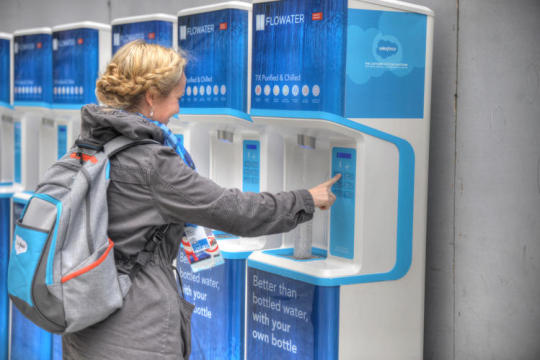How Hiring a Contract Manufacturer Can Bring Your Invention Idea to Life
By Emily Moorhead | allBusiness
Are
you an entrepreneur with a new product idea you would like to bring to
market? Perhaps you don’t have the production equipment needed to
produce your product yourself, or maybe you are hoping to sell or
license your idea to a company, but need some initial stock to show
sales potential, value, and usefulness.
In these situations, hiring a contract manufacturer may suit your needs. But what is a contract manufacturer and what can you expect from them?
A contract manufacturer is a for-hire firm that will produce a specific quantity of your product for a set fee based on agreed upon specification. The price of the service is based on an estimation of the processes, labor, tooling, and materials costs.
Hiring a contract manufacturer may make sense to startup businesses and self-made entrepreneurs because it takes the lengthy process of manufacturing off their shoulders and entrusts it to a product creation team that has experience in the industry. It also may save a business money because it allows an inventor to not have to purchase manufacturing equipment. Some contract manufacturers may even inventory and ship products, which can be both labor-intensive and cost-prohibitive for a small business.
There are always risks associated with outsourcing, and contract manufacturing is not an exception. Consider speaking to an attorney to go over the business arrangement and ensure you have an understanding of the services you are paying for and their extents and limitations. Generally, keep these words of advice in mind when considering a contract manufacturer:
Get 25% off Web Hosting using code HOSTING25 at Yahoo Small Business

It is also possible a low price can be associated with substandard
materials or less-than-stellar craftsmanship. Although this is not
always the case, be wary when considering an offer that is much lower in
price than competitors’ pricing. Be sure you are familiar with the
specifications and know exactly what you are getting for the cost.
Related Articles
Research many different manufacturers on consumer sites and ask for references from customers who produce products similar to yours. Always compare specifications throughout your top choices to ensure each company is offering comparable materials and labor. If a small, yet reputable company can provide you with the same service and quality materials as a big-name competitor for a better cost, it is worth considering the less expensive, but also lesser-known company.
Think about it like this: when you shop at a bulk-buying club, such as Sam’s Club or Costco, you could buy 20 pounds of ground beef at a cheaper cost per ounce than if you bought it at a local grocer. However, if you don’t use all of the ground beef, you have wasted money and resources. If you buy 5,000 of your product, but only need 500, you’re going to be wasting space in your garage with an overflow of stock and wasting money which could be used on another aspect of your business.

For the sake of both parties’ budgets and sanity, go over the specifications in precise detail before signing on the dotted line. Discuss what is to be produced, how it will be created, what materials are to be used (with brand names and weights, if applicable), the time frame from start to finish, who pays for shipping and delivery, and any other details in the production of your product. There is nothing worse than finding out halfway through production the wrong plastic was used or the dimensions are incorrect and having to start over.
Contract manufacturing can be an excellent way to turn your invention into a reality without having to do all the labor yourself; however, be wary as with signing any legally-binding document. When considering contract manufacturing, ensure you’re not paying too little for your chosen services, consider lesser-known as well as big-time manufacturers, avoid paying a lower cost per unit for an excessive amount of product, and review your specifications in painstaking detail to set yourself and your company on the right path.
Related Articles
In these situations, hiring a contract manufacturer may suit your needs. But what is a contract manufacturer and what can you expect from them?
A contract manufacturer is a for-hire firm that will produce a specific quantity of your product for a set fee based on agreed upon specification. The price of the service is based on an estimation of the processes, labor, tooling, and materials costs.
Hiring a contract manufacturer may make sense to startup businesses and self-made entrepreneurs because it takes the lengthy process of manufacturing off their shoulders and entrusts it to a product creation team that has experience in the industry. It also may save a business money because it allows an inventor to not have to purchase manufacturing equipment. Some contract manufacturers may even inventory and ship products, which can be both labor-intensive and cost-prohibitive for a small business.
There are always risks associated with outsourcing, and contract manufacturing is not an exception. Consider speaking to an attorney to go over the business arrangement and ensure you have an understanding of the services you are paying for and their extents and limitations. Generally, keep these words of advice in mind when considering a contract manufacturer:
Don’t Be a Cheapskate
A lower price tag may not always be the best option. This price may just include the bare minimum of necessities for your product, and you will be stuck paying for expensive and necessary add-ons in order for your invention to turn out like you imagined.Related Articles
- The 15 Best Business Quotes from Steve Jobs
- The Biggest Mistake I Made in My Business—And What I Learned From It
- 40 Must-Have Business Apps to Run Your Company
Bigger Isn’t Always Better
On the other hand, a higher cost may not always be indicative of a higher quality product, just as a big-name manufacturer may not always be the best option for you.Research many different manufacturers on consumer sites and ask for references from customers who produce products similar to yours. Always compare specifications throughout your top choices to ensure each company is offering comparable materials and labor. If a small, yet reputable company can provide you with the same service and quality materials as a big-name competitor for a better cost, it is worth considering the less expensive, but also lesser-known company.
Quality Over Quantity
A simple law in manufacturing is the more product you purchase, the less each will cost to produce. This is because the production phase of manufacturing is the most costly since it involves expensive and time-consuming processes and preparation work. Once the machines start to run, the only difference between producing 500 or 5,000 of your product is the raw materials. It may sound appealing to get 10 times more product for only double the cost, but don’t just buy because the price per unit is less.Think about it like this: when you shop at a bulk-buying club, such as Sam’s Club or Costco, you could buy 20 pounds of ground beef at a cheaper cost per ounce than if you bought it at a local grocer. However, if you don’t use all of the ground beef, you have wasted money and resources. If you buy 5,000 of your product, but only need 500, you’re going to be wasting space in your garage with an overflow of stock and wasting money which could be used on another aspect of your business.
Specify, Specify, Specify
In manufacturing, your job costs are based on a set of agreed-upon specifications; that is, a list of the materials from which your product will be created as well as dimensions and other physical boundaries. These specifications are incredibly important. If there is a communication issue regarding size, color, type of plastic, etc., you may be out thousands of dollars and stuck with a useless product.For the sake of both parties’ budgets and sanity, go over the specifications in precise detail before signing on the dotted line. Discuss what is to be produced, how it will be created, what materials are to be used (with brand names and weights, if applicable), the time frame from start to finish, who pays for shipping and delivery, and any other details in the production of your product. There is nothing worse than finding out halfway through production the wrong plastic was used or the dimensions are incorrect and having to start over.
Contract manufacturing can be an excellent way to turn your invention into a reality without having to do all the labor yourself; however, be wary as with signing any legally-binding document. When considering contract manufacturing, ensure you’re not paying too little for your chosen services, consider lesser-known as well as big-time manufacturers, avoid paying a lower cost per unit for an excessive amount of product, and review your specifications in painstaking detail to set yourself and your company on the right path.
About Emily Moorhead
Emily Moorhead is a Social Media and Digital Marketing Specialist at InventHelp, specializing in content creation. She enjoys blogging about inventions, innovation, and technology and has worked in business, audio visual technology, nonprofits, and hospitality. Her passions include cooking, reading, camping, and curling up with her two cats.Related Articles






